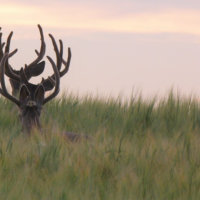Sept 10, 2020
Calgary – CPAWS Southern and Northern Alberta chapters are encouraged to see the government’s investment of $9.7-million in restoration projects to benefit habitat for Alberta’s threatened caribou and native trout. The focus on initiatives like restoring disturbances in caribou habitat, improving connectivity in fragmented southern landscapes, and restoring important native fish habitats are important and overdue steps towards species at risk recovery. These initiatives also benefit Albertans by providing important employment opportunities and contributing to our economic recovery.
While this is an important step taken, we remain concerned about the broader implications for the funding of important conservation work in Alberta. While we understand that using funds from the Land Stewardship Fund is a temporary measure during the COVID-19 pandemic, these funds come from public land sales. Recovery actions for species at risk, including habitat restoration, should not rely on public land sales in the long term. Public lands are a public good that provides many benefits to Albertans including ecosystem services, such as clean water and fish and wildlife habitat. Using the sale of lands as a source of funding for species at risk recovery or other conservation measures is unsustainable. Once public lands are sold, these conservation values are often lost to development. As Alberta grows, we will need these lands and the benefits they provide even more than we do today.
Habitat restoration activities both inside and outside protected areas, while crucial to caribou recovery, must be done within the context of broader habitat protection and land use planning. We look forward to the completion of land use plans that address caribou recovery goals, safeguard existing habitat, and restore disturbed critical habitat while providing employment opportunities across the province.
Moreover, restoration activities will be valuable for caribou if currently intact habitat is protected and restored areas are kept free of disturbance for a significant period of time. Likewise, restoration of riparian habitat for native trout is a key recovery strategy. Yet, in contrast to this announcement, the government is currently pushing to roll back land-use planning that was put in place to better protect native fish habitat in the Castle Parks and Porcupine Hills and Livingstone region. Investment in restoration should be aligned with maintenance and implementation of the 2018 Management Plans for these areas and overall investment in Land Use Planning.
More News

All-Seasons Resort Policy Released

Critical Habitat and Industry Lobbying Part 4: How DFO Allows Critical Habitat Destruction


